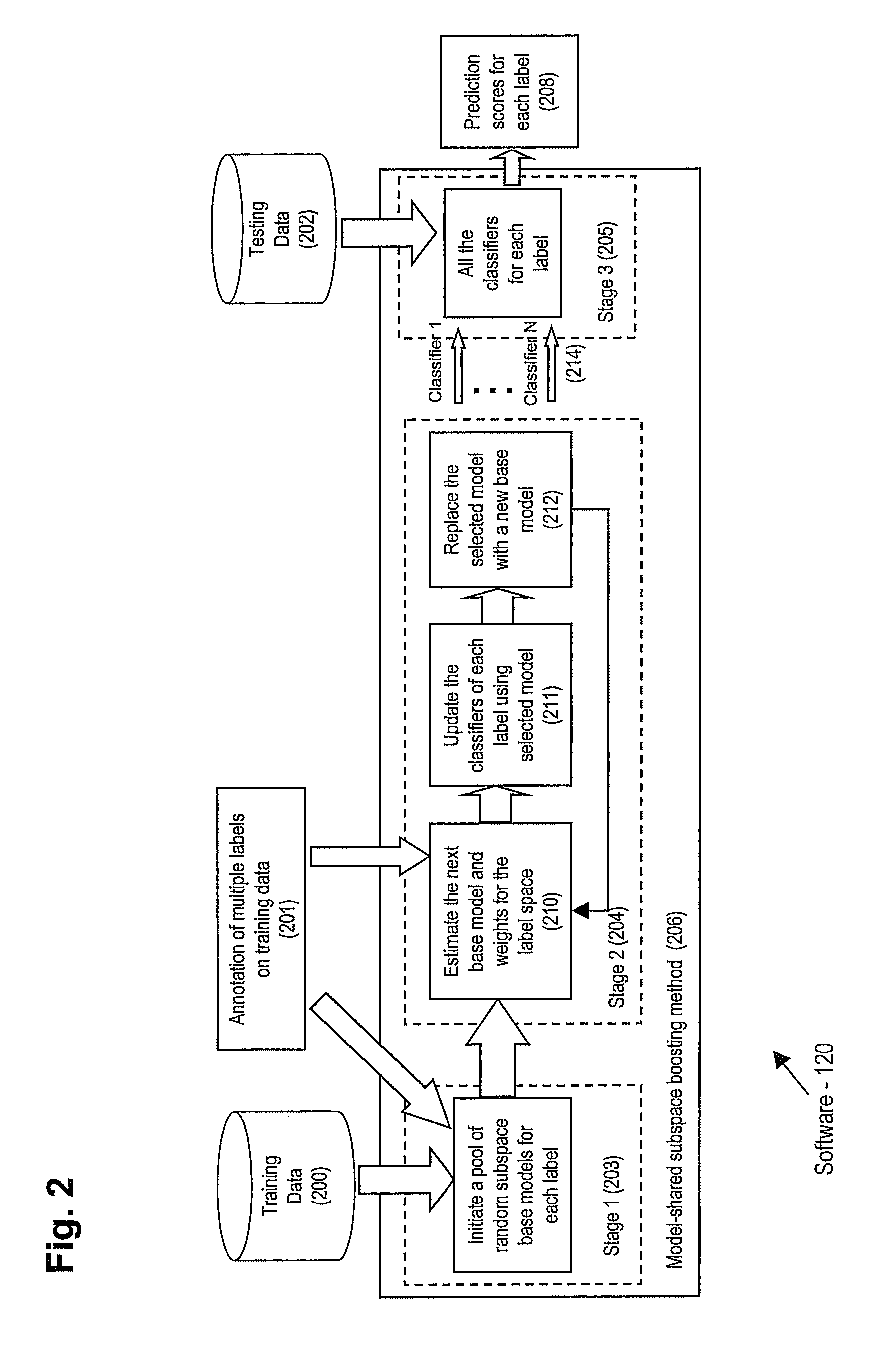Method and apparatus for model-shared subspace boosting for multi-label classification
a subspace and label classification technology, applied in the field of efficient information management, can solve the problems of inefficiency of algorithms used for handling multiple labels, inability and inability to provide mechanisms for foregoing methods to reduce the redundancy among labels
- Summary
- Abstract
- Description
- Claims
- Application Information
AI Technical Summary
Benefits of technology
Problems solved by technology
Method used
Image
Examples
Embodiment Construction
[0022]The teachings herein are directed toward automatic reduction of information redundancy in the data, feature and label space. This is accomplished by using computers to automatically find, share and combine the most useful learning models from the training data for multi-label learning. The approach scales to large datasets (such as real-world multimedia collections) with millions of entries and thousands of labels while keeping a high level of performance and discovering underlying context between multiple labels. As described herein, provided is a learning algorithm referred to as a “model-shared subspace boosting” algorithm (referred to as “MSSBoost”).
[0023]In practice, MSSBoost merges ensemble learning, random subspace sampling, and models sharing techniques to automatically find, share and combine a number of random subspace models across multiple labels. MSSBoost is able to reduce the information redundancy in the label space by jointly optimizing loss functions over all ...
PUM
 Login to View More
Login to View More Abstract
Description
Claims
Application Information
 Login to View More
Login to View More - R&D
- Intellectual Property
- Life Sciences
- Materials
- Tech Scout
- Unparalleled Data Quality
- Higher Quality Content
- 60% Fewer Hallucinations
Browse by: Latest US Patents, China's latest patents, Technical Efficacy Thesaurus, Application Domain, Technology Topic, Popular Technical Reports.
© 2025 PatSnap. All rights reserved.Legal|Privacy policy|Modern Slavery Act Transparency Statement|Sitemap|About US| Contact US: help@patsnap.com



